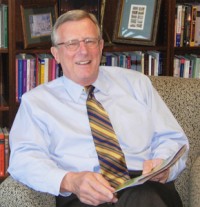Passion narrative: Palm Sunday is a big deal
Palm Sunday is a big deal in the church I serve. As the congregation sings “All Glory, Laud and Honor,” the children—from infants in parents’ arms to wiggly six-year-olds to uncomfortable adolescents—parade down the center aisle and fill the chancel, waving palms. It’s a reminder that there are more children and families living in the center city than you might expect. It’s also a reminder that the Christian family embraces young and old and everyone in between. And, of course, the children are gorgeous. Usually I can see more than a few parents and grandparents daubing their eyes with Kleenex.
You could say that the ceremony sentimentalizes a complex and tragic event. Writes William Stringfellow in Free in Obedience: “The real witness of Palm Sunday is not the parade or what the disciples or the secular authorities saw; it is the encounter between Christ and the power of death.”
So we need to keep the children waving palm branches and singing sweet hosannas in tension with the real complexity of the event and, of course, the events it precipitated. It has always seemed to me a most incarnational day—the occasion when Jesus, with obvious deliberation, came to the city that was the heart of his people’s political, economic and religious life. It is a paradigmatic occasion when we confront Jesus’ call to follow him and stumble along behind him.
I’m not sure exactly when it happened, but at some point the liturgical calendar changed and Palm Sunday became Passion Sunday, with the strong suggestion that we read as much of the Passion narrative as we can on this Sunday before Easter. I always rather liked the older tradition of marking Passion Sunday two weeks before Easter as a time to devote attention to the Passion, Christ crucified, and then to deal with the powerful complexity of his entry into the capital city on the first day of Holy Week.
Marcus Borg and John Dominic Crossan discuss these liturgical changes and recall how Good Friday used to be celebrated ("Collision course"). People my age remember: it was a school holiday and we spent three hours in church, from noon until 3, listening to seven preachers have at the “seven last words” of Christ. My memories of those hours are that it was a very long time to be confined to a pew on a spring afternoon, with the baseball diamond summoning. But it did impress me that something very significant was at the heart of it, something that warranted a lot of my attention. Borg and Crossan suggest that when Good Friday stopped being recognized as a public holiday, the story of the crucifixion was heard by fewer and fewer people. So “the story needs to be told on the Sunday before Easter.” I can’t argue with the logic of that, but I do lament and resist diluting the complex power of Palm Sunday.
In their book The Last Week, Borg and Crossan follow the Gospel of Mark’s account of Jesus’ last week, day by day, hour by hour. In the process they note details that we might overlook. They dispel the notion that the crowd that welcomed Jesus turned against him during the week. How many sermons have been preached on that theme? The crowd was his protection, it turns out. The authorities were afraid of the crowd. The crowd that gathered in Pilate’s courtyard and demanded his crucifixion wasn’t the Palm Sunday crowd at all, but “supporters of the authorities—perhaps a few dozen people.” That is an important observation. And more than ever, it makes me want to be there on Palm Sunday, when the children sing sweet hosannas and tears come to grandparents’ eyes.






